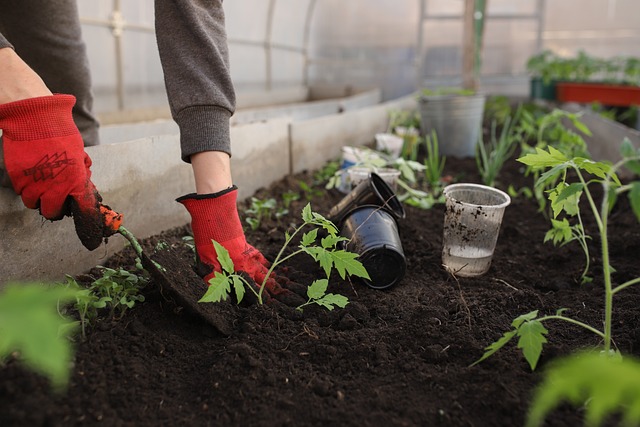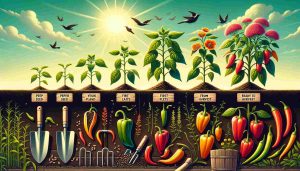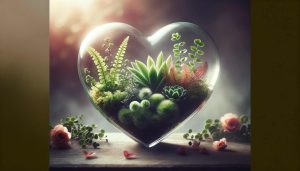Gardening enthusiasts know the importance of soil quality when it comes to nurturing healthy and thriving plants. However, one common question that arises is whether gardening soil can go bad over time.
Gardening soil doesn’t go bad like perishable food, but its quality can deteriorate over time. Factors like nutrient depletion, compaction, and microbial changes can affect soil health. Regular care, amendments, and proper storage help maintain soil quality and longevity.
In this article, I will delve into the shelf life of potting soil and bagged soil, addressing concerns about their expiration dates and potential deterioration. By understanding the factors that influence soil longevity and exploring specific products like Miracle-Gro Potting Mix, I aim to provide clarity and guidance for gardeners seeking to optimize their soil health.
Let’s dig in and uncover the truth about the lifespan of gardening soil.
Understanding Potting Soil
Potting soil plays a crucial role in container gardening, providing the necessary nutrients, moisture retention, and aeration for potted plants to thrive. To better understand the concept of soil expiration, it’s essential to grasp the composition and characteristics of potting soil.
Potting soil, also known as potting mix, is a specially formulated soil medium designed for container gardening. Unlike garden soil, which is often heavy and dense, potting soil is lightweight and well-draining to promote optimal root growth.
Potting soil typically consists of a blend of organic matter, such as peat moss, coconut coir, or compost, which provides nutrients and improves moisture retention. It may also contain inorganic components like perlite, vermiculite, or sand to enhance drainage and aeration. Some potting soils may incorporate additional ingredients like limestone for pH balancing or slow-release fertilizers for long-term plant nourishment.
Role of Potting Soil in Container Gardening
Potting soil serves several essential functions in container gardening including:
- Nutrient Availability: Potting soil provides a source of nutrients to support plant growth and development since potted plants rely solely on the nutrients within the container.
- Moisture Retention: The organic matter in potting soil helps retain moisture, preventing rapid drying and ensuring plants have access to adequate water.
- Drainage and Aeration: The inorganic components in potting soil, like perlite or vermiculite, facilitate proper drainage and air circulation within the container, preventing waterlogging and root rot.
- pH Balance: Potting soil is often formulated with a balanced pH level, creating an optimal environment for plant roots to absorb nutrients efficiently.
Factors Affecting the Shelf Life of Potting Soil
While potting soil doesn’t have a definitive expiration date, its shelf life can be influenced by various factors. These include:
- Organic Matter Decomposition: The organic components in potting soil can break down over time, reducing their effectiveness in providing nutrients and moisture retention.
- Nutrient Depletion: Continuous plant growth and nutrient uptake can deplete the available nutrients in potting soil, requiring supplementation or soil replacement.
- Compaction and Degradation: Frequent watering, compacting, and exposure to sunlight can lead to the degradation of potting soil structure, affecting drainage and aeration.
- Microbial Activity: The presence of beneficial microorganisms in potting soil can decline over time, impacting nutrient cycling and overall soil health.
Does Potting Soil Expire?
There is a common misconception that potting soil has an expiration date, similar to food products. However, potting soil doesn’t technically “expire” in the same way perishable items do. Instead, its quality and effectiveness may decline over time due to various factors. Let’s explore this further:
Unlike perishable goods, potting soil doesn’t have a fixed expiration date printed on the package. This is because the deterioration of potting soil largely depends on external factors and the quality of its ingredients.
Over time, potting soil may experience degradation and changes that affect its performance. Some factors that can contribute to this include:
- Nutrient Depletion: As plants grow and extract nutrients from the soil, the available nutrients in potting soil can become depleted. This can result in decreased fertility and hinder plant growth if not addressed through fertilization or soil amendments.
- Organic Matter Breakdown: The organic components in potting soil, such as peat moss or compost, may decompose over time. This can lead to a reduction in their ability to retain moisture and provide essential nutrients to plants.
- Compaction and Settling: Frequent watering, plant root growth, and general use can cause potting soil to become compacted and settle, reducing its ability to drain water effectively and provide adequate aeration to plant roots.
- Loss of Beneficial Microorganisms: Beneficial microbes that contribute to soil health and nutrient cycling may decline over time, impacting the overall vitality of the potting soil.
Signs of Potting Soil Deterioration
While potting soil may not have a definitive expiration date, there are signs that can indicate its deterioration:
- Compacted and Hardened Texture: If the potting soil becomes excessively compacted and hard, it can hinder proper root growth and drainage.
- Foul Odor: A strong, unpleasant odor emanating from the potting soil may indicate the presence of harmful bacteria or fungal growth, which can negatively impact plant health.
- Poor Drainage and Waterlogging: If the potting soil retains water for an extended period or becomes excessively waterlogged, it suggests a degradation in its structure and drainage capabilities.
- Reduced Plant Growth and Vitality: If plants grown in the potting soil show stunted growth, yellowing leaves, or overall poor health despite appropriate care, it could be a sign that the potting soil is no longer providing adequate nutrients or moisture.
While potting soil may not necessarily go bad in the traditional sense, its quality can decline over time, affecting its effectiveness in supporting plant growth. Regular assessment, soil amendments, and replacement when necessary can help maintain optimal soil health and ensure the success of your gardening endeavors.
Factors Influencing Potting Soil Longevity
The longevity of potting soil can be influenced by various factors. By understanding these factors, gardeners can take appropriate measures to extend the lifespan and optimize the performance of their potting soil. Let’s explore the key factors that play a role:
1. Moisture Content and Storage Conditions
- Moisture Control: Excessive moisture can promote the growth of harmful fungi and bacteria, leading to the degradation of potting soil. Adequate drainage and avoiding overwatering can help maintain the soil’s integrity.
- Proper Storage: Storing potting soil in a dry and well-ventilated area, protected from direct sunlight and extreme temperature fluctuations, can prevent excessive moisture buildup and maintain its quality.
2. Exposure to Sunlight and Temperature Variations
- Sunlight Exposure: Prolonged exposure to direct sunlight can cause potting soil to dry out quickly, leading to nutrient depletion and reduced moisture retention. Protecting potting soil from excessive sunlight can help maintain its moisture balance.
- Temperature Fluctuations: Extreme temperature variations, especially freezing temperatures, can affect the structure of potting soil, leading to compaction or expansion. Storing potting soil in a climate-controlled environment can help preserve its quality.
3. Quality of Ingredients and Packaging
- Ingredient Quality: The quality of the ingredients used in potting soil can impact its longevity. Opting for high-quality, well-composted organic matter and properly processed inorganic components can result in more durable and nutrient-rich soil.
- Packaging Integrity: The packaging of potting soil plays a crucial role in preserving its freshness and preventing contamination. Ensure that the packaging is intact, without any holes or tears, to maintain the quality of the soil.
4. Fertilization and Soil Amendments
- Nutrient Replenishment: Regular fertilization and supplementation with organic or slow-release fertilizers can replenish the nutrient content of potting soil, extending its lifespan and promoting healthy plant growth.
- Soil Amendments: Adding organic matter, such as compost or aged manure, to potting soil can improve its structure, nutrient content, and water-holding capacity. Soil amendments help rejuvenate and enhance the longevity of the soil.
Regular monitoring, appropriate watering, and timely soil amendments contribute to the overall health and productivity of the soil.
Bagged Soil: Does It Go Bad?
Bagged soil, often sold as pre-packaged soil mixes, is a convenient option for gardeners looking to save time and effort. However, like potting soil, bagged soil may raise questions about its shelf life and potential expiration. Let’s explore whether bagged soil can go bad and the considerations associated with it:
Bagged soil typically refers to various types of soil mixes available in pre-packaged bags. These may include potting soil, garden soil, topsoil, or specialty blends tailored for specific plant needs. While potting soil is specifically formulated for container gardening, bagged soil encompasses a broader range of soil mixes suitable for different gardening purposes.
Evaluating the Shelf Life of Bagged Soil
- Expiration Date: Some bagged soils may come with an expiration date or “best by” date printed on the packaging. This date serves as a guideline for optimal product performance, but it doesn’t necessarily mean the soil becomes unusable after that date.
- Quality Maintenance: The shelf life of bagged soil depends on factors such as storage conditions and the quality of its ingredients. Proper storage and handling can help maintain the soil’s integrity and extend its usability.
Common Issues with Expired Bagged Soil
While bagged soil may not strictly expire, there are some issues that may arise when using expired or degraded soil:
- Nutrient Depletion: Over time, the available nutrients in bagged soil may become depleted, resulting in inadequate nourishment for plants. Supplementing with fertilizers or incorporating fresh organic matter can address this issue.
- Compaction and Drainage Problems: Bagged soil that has been stored for an extended period may become compacted, hindering proper drainage and aeration. Loosening the soil or mixing it with fresh soil can improve its structure.
- Pathogen Buildup: Expired bagged soil may be more susceptible to pathogen growth, which can harm plants. Sterilizing or pasteurizing the soil before use can help eliminate or reduce harmful pathogens.
It’s important to note that bagged soil, like any other gardening product, is subject to degradation and changes over time. However, with proper storage, regular assessment, and necessary amendments, the lifespan and quality of bagged soil can be maintained, ensuring it remains suitable for use in gardening projects.
Remember to check the packaging for any expiration dates or guidelines provided by the manufacturer and use your judgment to determine if the bagged soil is still suitable for your gardening needs.
Extending the Lifespan of Gardening Soil
To maximize the lifespan and effectiveness of gardening soil, proper care and maintenance are essential. Here are some strategies to extend the longevity of your soil:
Proper Storage Techniques for Potting and Bagged Soil
- Dry Storage: Keep your soil in a dry storage area to prevent excess moisture buildup, which can lead to the growth of harmful microorganisms and deterioration of the soil quality.
- Ventilation: Ensure the storage area has adequate ventilation to promote air circulation and prevent the accumulation of moisture.
- Protection from Sunlight: Shield the soil from direct sunlight, as prolonged exposure can dry it out and degrade its quality. Store it in a shaded area or use opaque containers to limit light exposure.
Enhancing Soil Quality through Amendments and Composting
- Soil Amendments: Regularly amend your soil with organic matter, such as compost, aged manure, or worm castings. These additions enrich the soil with nutrients, improve its structure, and enhance its ability to retain moisture.
- Composting: Compost kitchen scraps, yard waste, and plant debris to create nutrient-rich compost. Incorporate compost into your gardening soil to replenish nutrients and promote healthy microbial activity.
Rejuvenating Old or Expired Soil for Reuse
- Soil Testing: Periodically test your soil’s nutrient levels to identify any deficiencies or imbalances. This allows you to adjust the soil composition with appropriate fertilizers or amendments.
- Soil Mixing: If you have old or depleted soil, mix it with fresh soil or compost to revitalize its nutrient content and improve its structure.
- Crop Rotation: Practice crop rotation by alternating the types of plants grown in a specific area. This helps prevent nutrient depletion and minimizes the buildup of pests and diseases specific to certain plant families.
Mulching and Protective Coverings
- Mulching: Apply a layer of organic mulch, such as wood chips or straw, on the soil surface. Mulching helps retain moisture, regulate soil temperature, and suppress weed growth, reducing the strain on the soil.
- Protective Coverings: Use row covers or protective cloths to shield your soil from extreme weather conditions, such as heavy rain, frost, or excessive heat. This helps prevent erosion, waterlogging, and temperature fluctuations that can negatively impact soil quality.
Regular monitoring and adjustments based on the specific needs of your plants will contribute to the overall health and success of your garden.
The Role of Miracle-Gro Potting Mix
Miracle-Gro Potting Mix is a widely recognized and popular brand of potting soil. Understanding its role and characteristics can provide valuable insights into its usage and potential expiration considerations. Let’s explore the key aspects of Miracle-Gro Potting Mix:
Overview of Miracle-Gro Potting Mix
- Purpose: Miracle-Gro Potting Mix is specifically formulated to provide an ideal growing medium for container plants, both indoors and outdoors.
- Composition: It typically consists of a blend of organic materials, such as sphagnum peat moss, composted bark, and coconut coir, combined with inorganic additives like perlite or vermiculite. These ingredients promote proper aeration, moisture retention, and nutrient availability for plants.
- Nutrient Enrichment: Miracle-Gro Potting Mix often contains slow-release fertilizers, providing essential nutrients to plants over an extended period. This helps maintain optimal plant nutrition and reduces the need for frequent fertilization.
Does Miracle-Gro Potting Mix Have an Expiration Date?
- Shelf Life: Miracle-Gro Potting Mix does not have a specific expiration date. However, it is essential to consider factors that may affect its quality over time.
- Quality Maintenance: Proper storage and handling are crucial to preserve the freshness and effectiveness of Miracle-Gro Potting Mix. Following the storage recommendations on the packaging helps maintain its integrity.
Maintaining the Freshness and Effectiveness of Miracle-Gro Potting Mix
- Storage: Store Miracle-Gro Potting Mix in a cool, dry place, protected from extreme temperatures and direct sunlight. Seal the bag tightly after each use to prevent moisture absorption and maintain its quality.
- Moisture Control: Avoid overwatering or letting the potting mix become excessively dry, as it can impact its ability to retain moisture and provide nutrients to plants. Proper watering practices help maintain an optimal moisture balance.
- Fertilization: While Miracle-Gro Potting Mix contains slow-release fertilizers, additional fertilization may be necessary over time as the nutrients gradually deplete. Regularly monitor plant health and consider supplementing with appropriate fertilizers when needed.
Miracle-Gro Potting Mix can be a valuable gardening resource, offering a well-balanced medium for container plants. By following recommended storage practices and monitoring plant health, you can ensure the freshness and effectiveness of the potting mix, promoting successful plant growth and longevity.
It’s important to note that specific instructions and guidelines provided by the manufacturer should always be followed to maximize the benefits of Miracle-Gro Potting Mix and ensure its optimal performance.
Conclusion
Understanding the lifespan and maintenance of gardening soil, including potting soil and bagged soil, is essential for successful gardening. While soil doesn’t have an expiration date like perishable goods, its quality can deteriorate over time due to various factors. By implementing proper storage techniques, addressing moisture control, and utilizing soil amendments, gardeners can extend the longevity and effectiveness of their soil.
Bagged soil, encompassing a range of soil mixes, doesn’t strictly expire but may experience nutrient depletion, compaction, or pathogen buildup over time. Checking for expiration dates, practicing proper storage, and assessing soil quality can help determine the usability of bagged soil.
Miracle-Gro Potting Mix, a popular brand of potting soil, serves as an ideal growing medium for container plants. While it doesn’t have a specific expiration date, attention to storage, moisture control, and occasional fertilization can maintain its freshness and effectiveness.
By prioritizing soil health, gardeners can provide an optimal environment for plant growth and enhance the overall success of their gardening endeavors. Regular monitoring, soil amendments, and necessary adjustments contribute to the longevity and productivity of the soil, ensuring thriving and beautiful gardens.
So dig in, take care of your soil, and enjoy the bountiful rewards of your gardening efforts.
Here’s your next read: Do Seeds Expire? Shelf Life Of Different Types Of Seeds Explained










